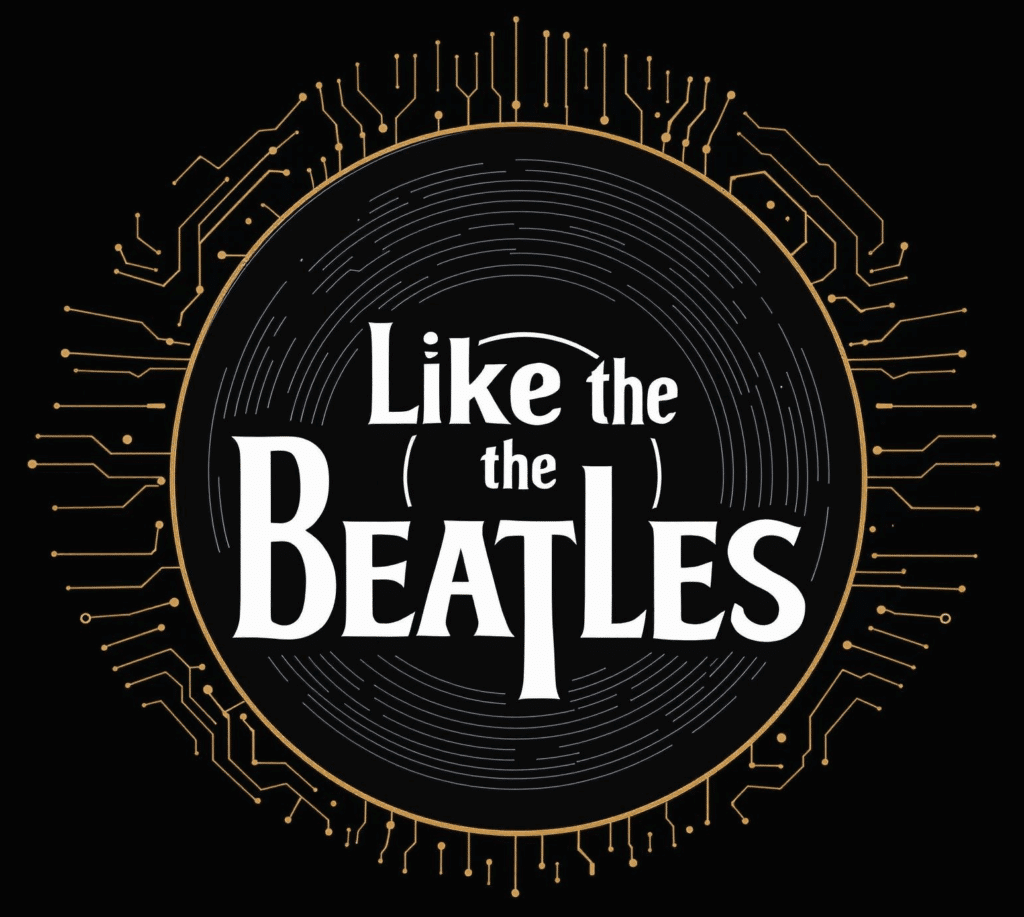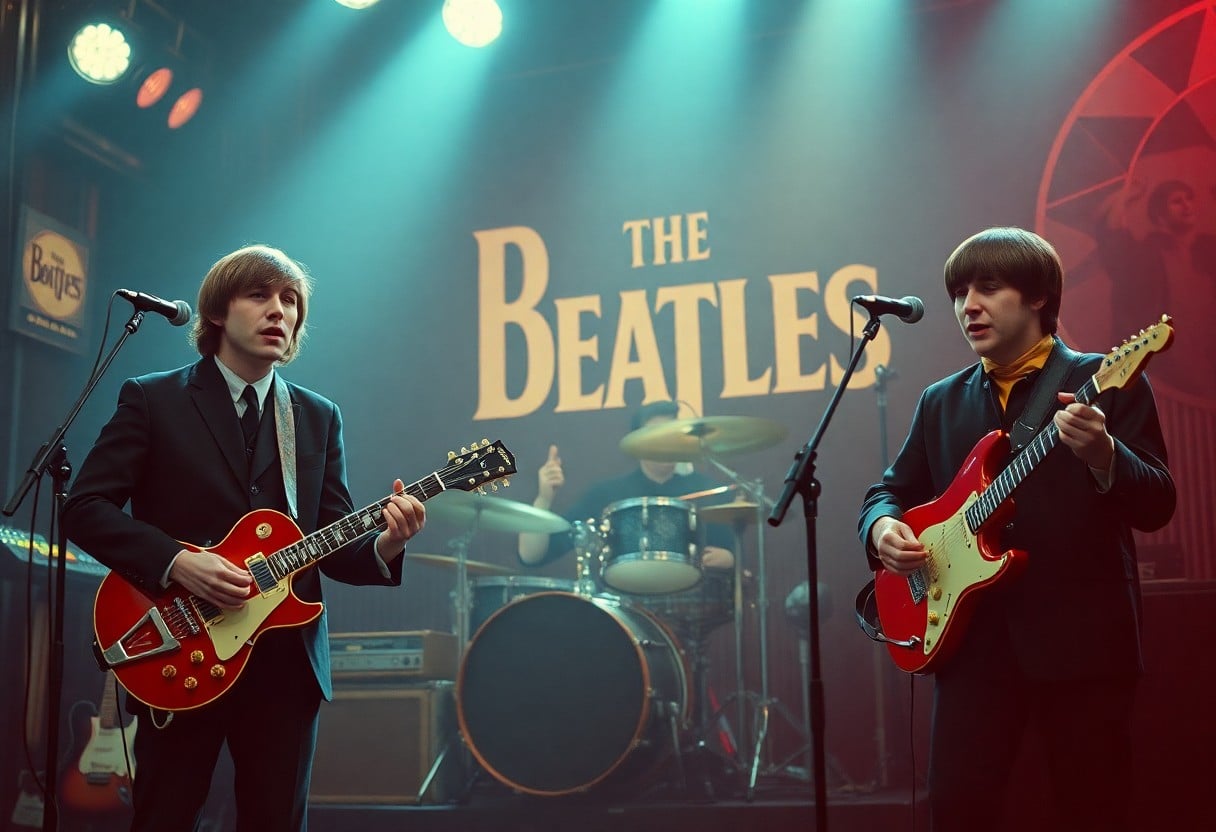With their unmistakable impact on music and culture, The Beatles transformed the landscape of the 20th century. As I explore their journey, I’ll guide you through pivotal moments that defined their evolution, from their early days in Liverpool to their groundbreaking experimentation in the studio. You’ll discover how their rise to fame brought both intense pressure and creative liberation, and how their eventual breakup marked the end of an era while also allowing for new artistic paths. Join me in uncovering the important milestones that shaped this legendary band.
Formation of the Beatles
The Beatles were formed in Liverpool in 1960, when John Lennon, Paul McCartney, George Harrison, and Ringo Starr came together with a shared passion for music. Their blend of diverse influences and distinctive musical talents created a new sound that would shape not only their futures but also the landscape of popular music itself. This initial lineup began their journey as a band, paving the way for an unprecedented transformation in the music industry.
Early Years and Influences
By honing their skills in local clubs and drawing inspiration from rock and roll, skiffle, and the rhythms of American pop, the group began to develop their unique style. Their early influences included icons like Elvis Presley and Buddy Holly, who ignited their creative ambitions. As they played together, their chemistry deepened, giving rise to the collaborative spirit that would define their songwriting and performance.
First Recordings and Initial Success
One of the first major milestones for The Beatles came with their initial recordings, which included their debut single “Love Me Do” in 1962. The song captured the attention of listeners and led to their rapid rise in popularity, allowing them to break into the UK charts.
In addition, their first significant success set the stage for a whirlwind of events that transformed them into global superstars. The infectious energy of early hits like “Please Please Me” and “Twist and Shout” resonated profoundly with audiences, showcasing their raw talent and unique sound. Each performance galvanized their fan base, cementing their reputation as a live band that could energize any crowd. This initial success not only boosted their confidence but also laid the groundwork for their future experimentation and innovation in music and songwriting, propelling them into a legendary career.
The British Invasion
If you’re familiar with music history, you know that the British Invasion was a period when British bands began to dominate the American music scene, with The Beatles leading the charge. To grasp how monumental this shift was, you can check out the Timeline: The Beatles to see their rise closely tied to this cultural phenomenon.
Breakthrough in the United States
With their appearance on The Ed Sullivan Show in February 1964, The Beatles made an indelible mark, capturing the hearts of millions and signaling their breakthrough in the United States. This performance not only showcased their immense talent but also propelled them to massive fame, revolutionizing music in America.
Cultural Impact and Media Presence
Cultural shifts were palpable as The Beatles not only dominated the charts but also influenced fashion, attitudes, and lifestyles in the 1960s. Their hairstyles and mod fashion became iconic, while their music often tackled themes of love, social unrest, and hope.
At that time, The Beatles were not just a band; they symbolized a generation. Their unprecedented media presence and their astonishing ability to innovate in the music world made them embodiments of the counterculture movement. As they faced both adulation and scrutiny, their messages resonated worldwide, setting the stage for future artists and movements. The Beatles’ ability to engage with societal issues through their music and public persona transformed societal norms in ways that still resonate today.
Experimental Years
Many people view the Beatles’ experimental years as a turning point in their career, marked by a daring artistic exploration that challenged the norms of popular music. During this phase, the band ventured into uncharted musical territories, incorporating diverse genres, innovative sounds, and even unconventional song structures. This era ultimately shaped their identity as pioneers of modern music and left a lasting legacy that continues to inspire artists today.
Shift to Studio Techniques
On the heels of their early commercial success, I found the Beatles transitioning from live performances to an all-consuming focus on studio production. This shift allowed them to explore intricate layering, sound manipulation, and groundbreaking technology such as automatic mixing and tape loops. It was a bold move that transformed their sound and set the stage for future innovations in the music industry.
Landmark Albums and Artistic Growth
By delving deeper into their craft, the Beatles produced landmark albums that reflected their artistic growth and ever-evolving style. These records, such as “Rubber Soul,” “Revolver,” and “Sgt. Pepper’s Lonely Hearts Club Band,” showcased their willingness to take risks while experimenting with lyrical depth and sonic experimentation.
Understanding the significance of these albums allows you to appreciate how the Beatles pushed the boundaries of popular music. Each project was characterized by a bold embrace of new genres and themes, which included psychedelia, folk influences, and surrealism. This artistic evolution wasn’t without challenges, as they faced public scrutiny and internal tensions; nevertheless, their commitment to innovation led to timeless artistry that still resonates today.
Personal and Professional Strains
Once again, the pressures of fame and the relentless pace of their careers put significant strain on The Beatles. As individual ambitions started to surface, the harmony of the group began to fray. The weight of creative and personal differences created an atmosphere that was at once electric and tense, affecting their collaborations and relationships both personally and professionally.
Individual Pursuits and Tensions
Above all, each member began to explore their own creative identities, leading to conflicting interests within the band. This divergence was evident in songwriting styles and musical preferences, which created a growing rift. As you can imagine, the combined impact of their individual passions and mutual expectations fostered an environment ripe for tension.
Changes in Band Dynamics
Along with individual pursuits, the group’s dynamics shifted dramatically over time. The unity that once defined The Beatles was challenged as they navigated personal differences and career aspirations.
For instance, as John Lennon gravitated toward more avant-garde influences, Paul McCartney focused on classic pop melodies, leading to clashes over creative direction. George Harrison increasingly sought recognition for his own songwriting, while Ringo Starr felt sidelined both musically and personally. This shift in dynamics ultimately affected their collaborative spirit, as the tension transformed their creative process from a joyful collaboration into a battleground of egos. The introduction of outside influences also played a role, from management decisions to personal relationships, adding layers of complexity to their interactions.
The Final Years
All good things must come to an end, and the Beatles were no exception. In their final years together, they faced significant challenges including personal conflicts and creative differences. Despite this turbulence, their music continued to evolve, showcasing a blend of experimentation and maturation that left an indelible mark on popular culture.
Last Albums and Farewell Tour
Across multiple studio sessions, the Beatles recorded their last albums, including “Abbey Road” and “Let It Be,” which encapsulated their artistic growth. Their farewell tour, marked by legendary performances, became a bittersweet reminder of their impact and the end of an era.
The Breakup and Legacy
Farewell was the theme of the Beatles’ breakup in 1970, leaving fans stunned and the music world shaken. Each member pursued solo careers, contributing to the group’s lasting influence in music and culture. Their legacy, filled with creative genius and cultural resonance, continues to inspire new generations of artists and music lovers alike.
A significant turning point in music history, the breakup of the Beatles marked the end of a groundbreaking collaboration that shaped sound, style, and culture. Their individual journeys post-split revealed personal struggles and creative explorations that added dimensions to their legacy. While the dynamics of their relationships became strained, the impact of their collective work fostered a bond among fans, solidifying their achievements and artistry in the annals of music history.
Summing up
Considering all points, I find that the key moments in The Beatles’ evolution from their early days in Liverpool to their breakup are marked by transformative experiences and musical innovations. You can see their growth through landmark albums like “Rubber Soul,” “Revolver,” and “Sgt. Pepper’s Lonely Hearts Club Band,” as well as their forays into experimental film and solo projects. Each phase reveals not just their artistic mastery but also their personal struggles and collaborations, shaping not just a band, but a global phenomenon in music history.












